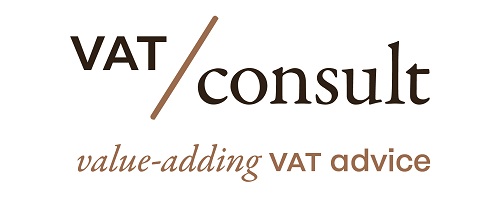On July 10, 2008, the ECJ issued its decision inthe case C-484/06 (Koninklijke Ahold).
Context: Reference for a preliminary ruling – First and Sixth VAT directives – Principles of fiscal neutrality and proportionality – Rules concerning rounding of amounts of VAT – Rounding down per item
Article in the EU VAT Directive
Article 11(A)(1)(a), 22(3)(b), 22(5) of the Sixth VAT Directive (Article 73, 206, 226 of the EU VAT Directive 2006/112/EC).
Article 73
In respect of the supply of goods or services, other than as referred to in Articles 74 to 77, the taxable amount shall include everything which constitutes consideration obtained or to be obtained by the supplier, in return for the supply, from the customer or a third party, including subsidies directly linked to the price of the supply.
Article 206
Any taxable person liable for payment of VAT must pay the net amount of the VAT when submitting the VAT return provided for in Article 250. Member States may, however, set a different date for payment of that amount or may require interim payments to be made.
Article 226
Without prejudice to the particular provisions laid down in this Directive, only the following details are required for VAT purposes on invoices issued pursuant to Articles 220 and 221:
(7a) where the VAT becomes chargeable at the time when the payment is received in accordance with Article 66(b) and the right of deduction arises at the time the deductible tax becomes chargeable, the mention ‘Cash accounting’;
(8) the taxable amount per rate or exemption, the unit price exclusive of VAT and any discounts or rebates if they are not included in the unit price;
(10a) where the customer receiving a supply issues the invoice instead of the supplier, the mention ‘Self-billing’;
Facts
- The company Albert Heijn BV, belonging to the Fiscale eenheid Koninklijke Ahold NV, which constitutes a fiscal entity for the levying of the turnover tax, operates supermarkets in which it offers a standard range of foodstuffs or other products.
- At the material time, namely October 2003, the applicant in the main proceedings calculated and declared the VAT in respect of sales in its supermarkets, according to its usual practice, on the basis of the total amount, according to each till receipt (or ‘shopping basket’), paid by a customer buying various articles at the same time.
- Each of the amounts on those till receipts was rounded arithmetically to the nearest cent (EUR). The operation of arithmetic rounding means that amounts in which the third decimal place is equal to or exceeds five are rounded up to the nearest cent and amounts in which the third decimal place is less than five are rounded down to the nearest cent. This procedure was followed by the applicant in the main proceedings in all its branches.
- However, at two branches during the relevant period the applicant also employed another method, which consisted of calculating the amount of VAT payable, not per till receipt, but separately for each item sold to the customer, by rounding the amount thus calculated per item down to the nearest cent.
- The applicant in the main proceedings accordingly calculated that, for those two branches during the relevant period, the result of that method of rounding down per item was that it should have paid EUR 1 414 less than the amount stated on its VAT return and which it in fact paid in accordance with its usual practice of rounding per till receipt.
- The applicant in the main proceedings applied for repayment of the amount of EUR 1 414 of VAT which, in its opinion, it had wrongly paid for the two branches in question. When that application was rejected, the applicant brought a complaint before the Inspector with the claim that ‘rounding per basket’ was incorrect and that the amount of the tax calculated per item should, when necessary, be rounded down to the nearest amount.
- The Inspector rejected that complaint. The applicant in the main proceedings brought an action seeking annulment of that rejection before the Gerechtshof te Amsterdam (Regional Court of Appeal, Amsterdam). That court dismissed the action as unfounded by judgment of 16 August 2004. The applicant then brought an appeal against that judgment before the Hoge Raad der Nederlanden (Supreme Court of the Netherlands).
- In the order for reference, the Hoge Raad der Nederlanden states that, in the opinion of the Gerechtshof te Amsterdam, even when the result of using the arithmetic method is a rounding up to the nearest cent, that method is, on balance, more consistent with the principle that the tax must be strictly proportional to the price than a method which prescribes rounding down to the nearest cent.
- The referring court adds that, in calculating the VAT, it is permissible for each supply of goods or each provision of services to adopt either the procedure of arithmetic rounding of the tax or the method of rounding the total amount of a certain number of supplies or service provisions taken together, namely, in this case, per basket. According to that court, both those methods are laid down, as from 1 July 2004, in Article 5 a of the implementing decree of 1968 on turnover tax (Uitvoeringsbesluit omzetbelasting 1968).
- The questions arising from the main proceedings are whether it is a requirement of the First and Sixth Directives that the method of rounding down per item be permitted and, more particularly, whether the provisions of the first and second paragraphs of Article 2 of the First Directive and of Articles 11A(1)(a) and 22(3)(b), first paragraph, in the version applicable before 1 January 2004, and 22(5) of the Sixth Directive are founded on a method which necessitates the amount of VAT being calculated on each transaction, even if various transactions are referred to on one invoice and/or are included in one and the same VAT return.
Questions
AG Opinion
(1) The Community VAT directives do not regulate in detail the rounding of amounts of VAT. Such regulation is therefore a matter for national law, which must, however, comply in that regard with all the relevant rules and principles which flow from the directives.
(2) Those rules and principles do not permit retailers to round down the amount of VAT in the VAT-inclusive price of each item sold, in order to determine the amount of output tax which they must declare in their regular returns.
Decision
1. In the absence of specific Community legislation, it is for Member States to decide on the rules and methods of rounding amounts of value added tax, but those States must, when making that decision, observe the principles underpinning the common system of that tax, in particular the principles of fiscal neutrality and proportionality.
2. Community law, as it now stands, entails no specific obligation for Member States to permit taxable persons to round down per item the amount of value added tax.
Personal comments/VATupdate
Source:
Similar ECJ cases
How did countries implement the case? Your feedback appreciated! Let us know
Newsletters
Latest Posts in "European Union"
- ECJ Case: VAT Treatment of Loyalty Points vs Vouchers Under EU Directive
- FISC Hearing on Tax Implications of Trump Administration Policies September 23
- VAT Rules for Virtual Game Currencies: EU Court Advocate General Opinion
- Comments on ECJ C-472/24: AG Opinion on Taxation of Virtual Gold in Online Gaming
- Briefing document & Podcast: ECJ C-564/15 (Farkas) – Non-application Reverse-Charge, 50% tax penalty is disproportionate














